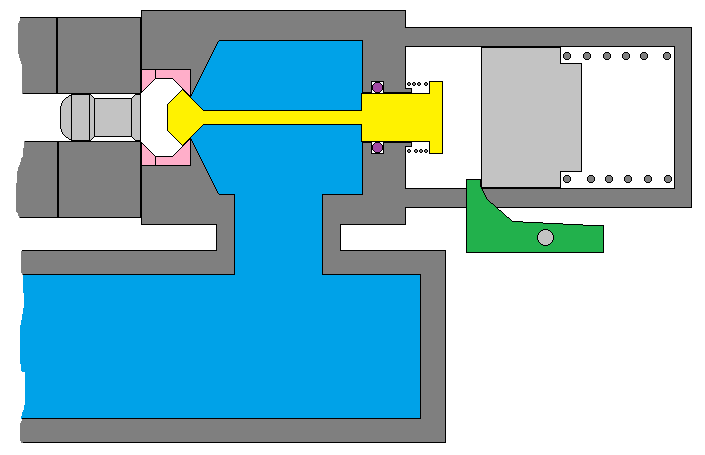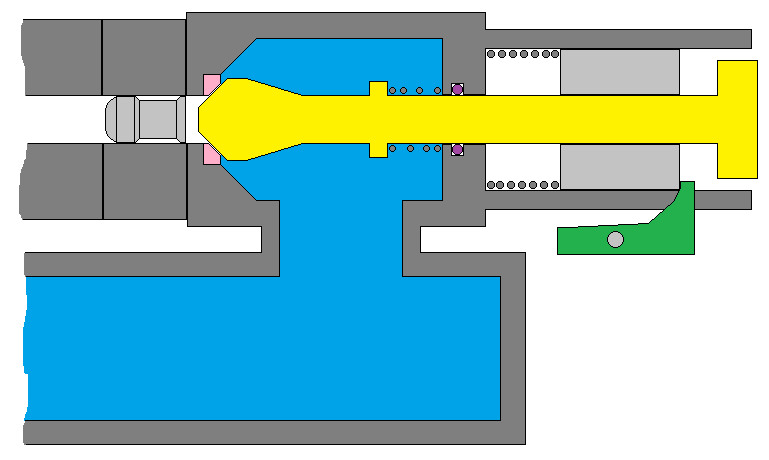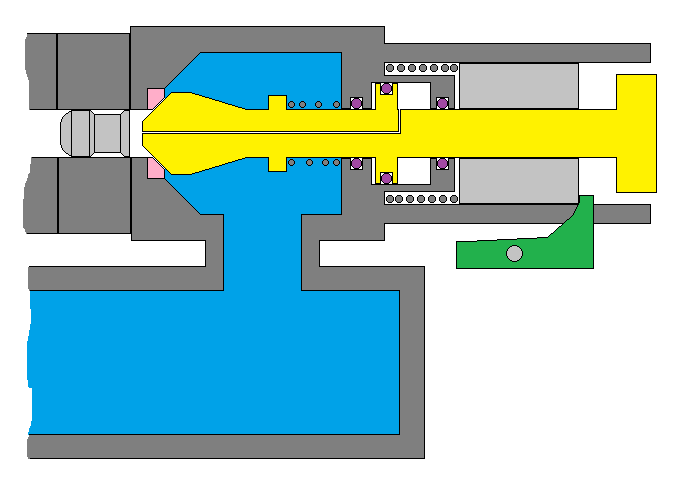Page 1 of 1
Valve reliability
Posted: Sat Nov 18, 2023 3:21 am
by ToasT
Reliability can be measured in different ways.
Does it leak at high pressure?
Does it leak at low pressure?
Does it fail to open?
Does it remain functional over time?
I say this after building a "dumpvalve" recently, turned piston with floating orings in an alumimum extruded ported cylinder. it worked fantastic, initially, but after a few days now leaks. I had doused it with oil several times to prevent wear, and made sure there were no sharp edges on the ports, but apparently that is not enough.
The other draw back was the higher the chamber pressure, the harder it became to open at the o-rings are pushed into the cylinder walls increasing friction.
I previously had a piston valve, which never suffered those issues, but the sealing face sometimes wouldnt make a seal, and eventually the face wore out, but so far, worked better for longer than the dumpvalve.
The bought quick exhaust valves i have found to be very reliable on all metrics, though they do dictate where you must fill the chamber from which isnt always practical though.
Now im thinking I should just make another piston, but better, as i am not interested in something boring like a ball valve haha.
Interested to hear others experiences and learnings with their valves.
Re: Valve reliability
Posted: Sun Nov 19, 2023 7:08 am
by jrrdw
Piston and cylinder matching 101
For me the piston side clearance is kept between .0005 and .001 with the O-rings just taking up the clearance. You adjust the O-rings fit by the depth of the groove in the piston. The O-rings should fit the piston snugly but not so tight it stretches the wall thin changing clearance. Sometimes you will need to use metric O-rings or a combination of SAE and metric to match the fit at the sealing face and tail of the piston.
No floating seals. No chamfers, round the edges.
The rest of the build depends on cannon configuration.
Re: Valve reliability
Posted: Sun Nov 19, 2023 9:59 am
by jackssmirkingrevenge
ToasT wrote: ↑Sat Nov 18, 2023 3:21 am
I had doused it with oil several times to prevent wear, and made sure there were no sharp edges on the ports, but apparently that is not enough.
The other draw back was the higher the chamber pressure, the harder it became to open at the o-rings are pushed into the cylinder walls increasing friction.
Even if properly chamfered, o-rings do not like to be moved past porting, especially at high pressure and at high speed.
With poor tolerances extrusion can happen with an o-ring moved in a cylinder:

it's the same issue with porting, the material gets forced into the port and this invariably causes wear.
Re: Valve reliability
Posted: Sun Nov 19, 2023 12:08 pm
by mark.f
Reliability stacks, the more parts, the more often the machine stops.
Theoretically, a spool valve like you built with one moving part should be very reliable. However, you probably need to look into how the seals on DCV's are done, O rings rarely like to move past porting, having the o-rings seal in a section of the carriage slightly smaller in ID than the portion that's ported with a chamfer would be better, here's a quick picture:
My personal experience with reliability is the 2" PVC piston valve I built in like 2007 worked every time, even after sitting for months at a time in my closet. The only seal was the seal with the rear of the barrel, everything else was just tightly fitting parts smeared in silicone grease with a 1/4" QEV pilot.
Re: Valve reliability
Posted: Tue Nov 21, 2023 12:09 am
by Moonbogg
Many interesting and good things have been said. I think it's all been covered. I'd just like to suggest maybe trying X-shaped o-rings. I tried them and love them. They are less picky about being squeezed too much and having too much friction while still sealing perfectly. They are made for sliding back and forth in stuff, like a piston does. I use them in a hybrid, and since using them, all I do is go around like an unpaid o-ring salesman telling people how great I think they are.
Re: Valve reliability
Posted: Tue Nov 21, 2023 8:26 am
by ToasT
Awesome, great replies, some things to try for sure

To be honest, I wasn't expecting so many replies so fast which is great to see.
Im thinking the floating nature of my orings (they were a slight compression fit in the cylinder) could be the main culprit to the leaking, as the spool might have been free to 'wobble' an imperceivable amount causing the cylinder to wear slightly as well as the orings. Makes sense when you stop and think about it i think.
I had noticed both orings were leaking too, and one never crosses the ports.
One day soon I will get this finished and into something that actually launches things. For now, this roughly shows the state it is at before trying your suggestions:
Overly complex maybe, but i wanted the feel of a mechanical action that sets and then arms the valve, and a button to trigger it. This was also intended to make its performance consistent.
The idea was that the spring would make the valve start to open at the same speed every time, but i have noticed that with a spool valve, the backpressure from the projectile is the stronger driver of opening speed.
Also, to help it open, i had hollowed out the spool so the collar on the sprung rod impacts it to get it moving. Before that, the o-ring sticking friction at higher pressures was too high for the spring to move it.
Re: Valve reliability
Posted: Thu Nov 23, 2023 10:43 pm
by jackssmirkingrevenge
A very interesting design!
Also, to help it open, i had hollowed out the spool so the collar on the sprung rod impacts it to get it moving. Before that, the o-ring sticking friction at higher pressures was too high for the spring to move it.
I can image that, the pressure causes the o-rings to expand and increases friction considerably.
I'm reminded of some designs I had proposed elsewhere in an effort to improve flow in a pneumatic gun compared to a conventional hammer valve.
This was one idea:

- jKC6TAg.png (11.79 KiB) Viewed 38221 times
However with the valve configured to retract the poppet rather than push it into the flow, dead volume is reduced and flow looks like it would be better:

- NnQsKV1.png (5.09 KiB) Viewed 38221 times
The fear however was that the differential pressure once the valve was open would lock it in place and dump the chamber, so a balancing element would probably be necessary

- HnOQLDW.png (5.38 KiB) Viewed 38221 times
Click for animation:
Re: Valve reliability
Posted: Tue Nov 28, 2023 6:41 am
by Doc j
I like the last animation .
With the Grub screw restrictor to adjust the air port so then adjust closing time of valve .
